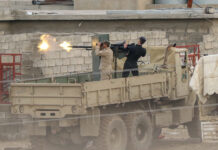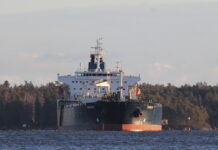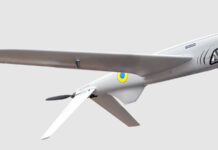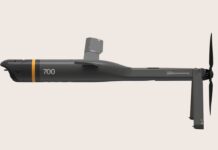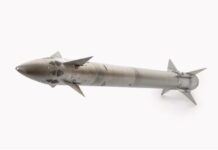Ukraine’s frontlines since Russia’s northern offensive
Alex Horobets
 The start of the war’s summer campaign in Ukraine has seen key developments emerging, the results of which could be assessed over the next few months. In May 2024, the Russian command launched an offensive in the Kharkiv region, in parallel lines with the ongoing offensive operations in Donetsk region. Given the limited Russian capabilities in the Kharkiv axis, it remains questionable whether the mission’s main objective was to besiege the city of Kharkiv. A more realistic one, should the advance see any forward success, would be to create a threat of cutting off Ukraine’s supply routes in the Kupiansk area. The likely minimum goal for the Russians was to pull Ukraine’s reserves to the country’s northern borders.
The start of the war’s summer campaign in Ukraine has seen key developments emerging, the results of which could be assessed over the next few months. In May 2024, the Russian command launched an offensive in the Kharkiv region, in parallel lines with the ongoing offensive operations in Donetsk region. Given the limited Russian capabilities in the Kharkiv axis, it remains questionable whether the mission’s main objective was to besiege the city of Kharkiv. A more realistic one, should the advance see any forward success, would be to create a threat of cutting off Ukraine’s supply routes in the Kupiansk area. The likely minimum goal for the Russians was to pull Ukraine’s reserves to the country’s northern borders.
However, Ukraine ultimately managed to stop the Russian onslaught near Kharkiv. The best Russia could do was to advance approximately 10 km deep into Ukraine. Moreover, in early June 2024, the Ukrainian Armed Forces even went for some successful counteroffensive actions in the region.
By opening a new offensive avenue, Russia seems to have created more problems for its invasion force. After all, it was in the wake of the latest offensive that Ukraine’s Western allies started permitting Ukraine to use their weapons for striking military targets on Russian soil, which previously seemed unlikely. Following the UK, France, and other NATO member states, the US and Germany also gave Ukraine the relevant green light.
Yet what prompted Vladimir Putin to hastily open a new operational theatre? Was it an attempt to test Ukraine’s defences or to increase the overall pressure on Ukraine and the Western coalition by demonstrating readiness for escalation? In this context, another immediate challenge for Russia should be recalled – the expected delivery of F-16 fighter jets to bolster Ukraine’s aerial capabilities. These warplanes are a concern for the Russians, which is seen from the Russian Ministry of Foreign Affairs issue statements claiming that the very appearance of US-made fighter jets in Ukraine would be tantamount to giving Kyiv nuclear weapons and therefore would be assessed as an act of provocation. Moscow usually resorts to such rhetoric on topics expected to cause new problems for the Russian troops on the battlefield. Additionally, in anticipation of the F-16 deliveries, Russia intensified attacks targeting infrastructure that could potentially accommodate these jets.
In the meantime, Ukraine is thoroughly preparing for the new warplanes’ deployment. Recently, the nation’s missile units went on a spree of taking out Russia’s air defence capabilities in occupied Crimea. The campaign primarily aims to clear the route for air-to-surface missiles to be launched by F-16s and to more effectively fight against Russian warplanes in aerial combat.
In general, the battlefield situation is soon set to become even more challenging for the Russians, since the recent steps made by Ukraine’s international partners have indicated their resolve to support Ukraine. Moreover, Ukraine’s allies are developing solutions for supporting and providing military assistance to Ukraine for the long run. In this context, in June 2024, US President Joe Biden signed a 10-year security agreement with his Ukrainian counterpart Volodymyr Zelensky.
At the same time, the Kremlin has recently been voicing threats of “fatal consequences” for anyone helping Ukraine. Putin said he may resort to a “asymmetrical” response, for example, by providing Russian weapons to countries which could attack Ukraine’s allies. Presumably, this would primarily refer to Iran, and by extension, to pro-Iranian groups in the Middle East.
As for Ukraine’s situation, the Kremlin has sent signals which could hint that it is exploring options for an exit strategy to the war. On 14 June 2024, ahead of the Global Peace Summit in Switzerland, Putin issued yet another peace ultimatum, which implied that Ukraine would have to give up the entire regions Russian legislators had voted to annex. However, such demands do not really indicate a genuine willingness to negotiate. They can be read as raising stakes and likely preparing for further escalation with the West. Given the current balance of forces, Russia currently cannot expect to capture by force the four regions it voted to annex anytime soon.
So far, it is clear that the trend of stronger Western support for Ukraine will help the nation carve firmer positions for real negotiations in the future. Otherwise, given the leadership’s predatory instincts, Moscow will keep mauling Ukraine if it senses its weakness amid Western indecisiveness.
Alex Horobets






